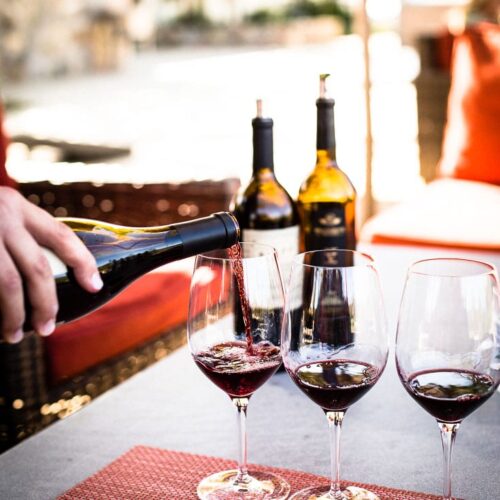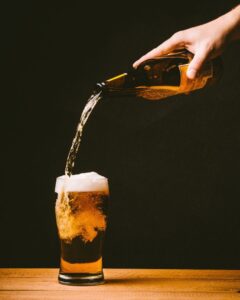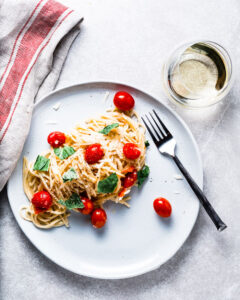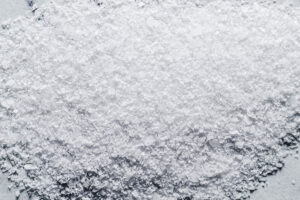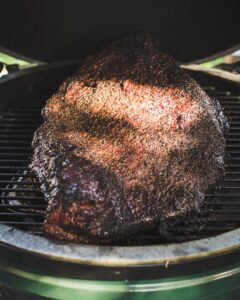How many of us have stood bewildered in a wine aisle, scanning labels for who knows how long, only to just grab a random bottle on sale and hope for the best? We all have! Buying wine can sometimes feel a bit like gambling.
Wine is complex, from the entire process of growing grapes to obtaining the right balance in the bottle. But you know what’s simple? Taking a sip of wine and saying, “Ooh, I like that.”
The goal is to learn just enough about wine so you’re able to detect what it is you like or dislike. Being able to describe those main characteristics and styles you prefer is not only helpful with food pairings, it takes the gamble out of wine aisles and restaurant lists too — it just makes wine less complicated and much more enjoyable.
Speaking of pairings, have you tried a dry rosé of Pinot Noir with baked salmon? How about Humboldt Fog cheese with fresh figs and a crisp Sauvignon Blanc? Or smoky-sweet ribs with a full-bodied, luscious Zinfandel? Who else is salivating right now? If you love beer too, be sure to check out our Beer 101 Guide!
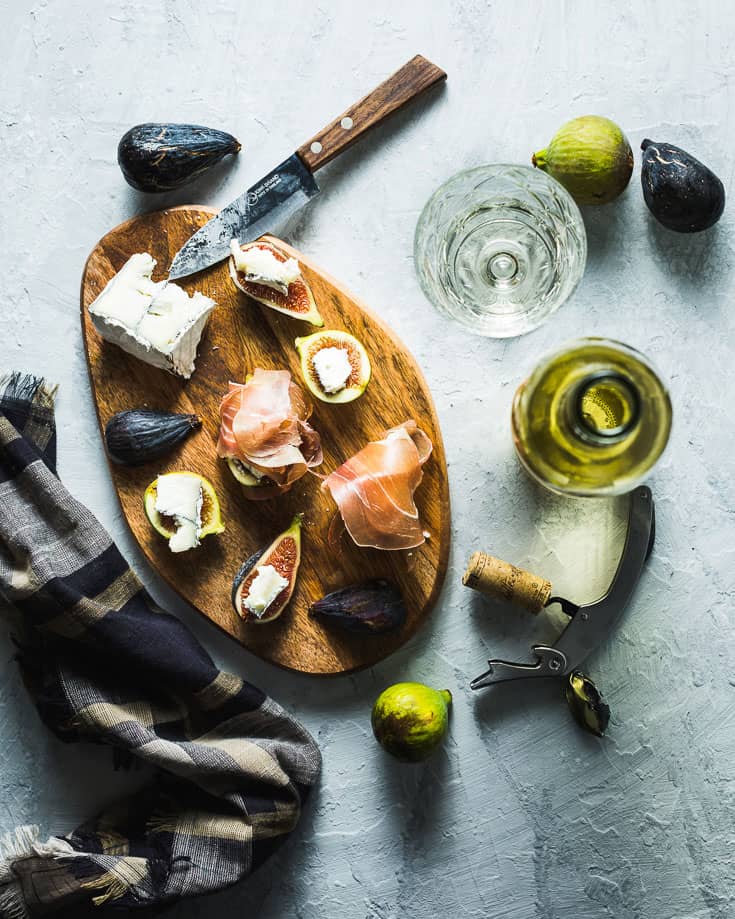
What Is Wine?
Wine is simply an alcoholic beverage made with fermented grapes. Grapes (vitis vinifera) are harvested, pressed for their juice, fermented using natural or added yeasts, winemakers cast magic spells (optional), it’s aged, bottled and distributed to your favorite wine store.
“Wine is sunlight, held together by water”
— Galileo Galilei
Main Styles of Wine
In general, the main styles of wine are red, white, rosé, sparkling and sweet. When we open any bottle and pour a glass, the idea of swirling, looking, smelling and tasting is all a part of observing and getting to know the wine better. Different wines are kind of like friends. Some you could visit every day, they’re consistent and we like them. Others may be more like acquaintances we haven’t gotten to know well yet. We know we like Malbec, but have we even tried to get to know Carménère yet? Each has their own unique style. Some are sweet, some are bright, and we like them all, even if they smell funky once in a while.
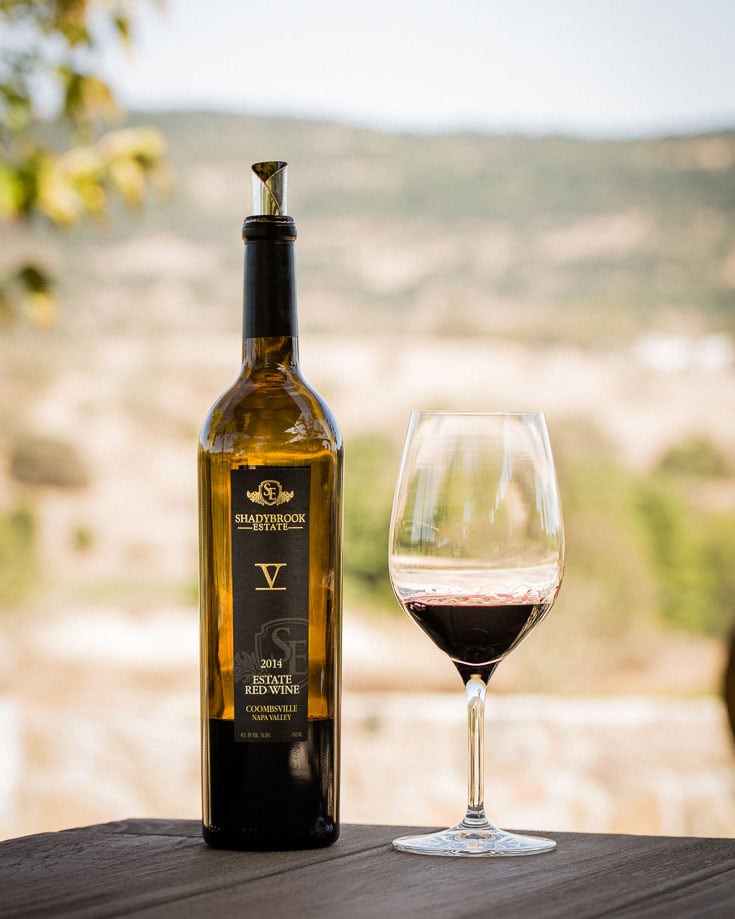
Red Wine
Red wine is made from red/black grapes (Merlot grape = Merlot wine) and can be made into a single varietal (just one grape used) or a blend. Color comes primarily from the pigment in grape skins and can range from pale ruby to a deep tawny. Red wines can be light-bodied (ex: Pinot Noir or Gamay), medium-bodied (Sangiovese or Grenache) or full-bodied (Shiraz or Petite Sirah).
Bordeaux is a famous French red blend of Cabernet Sauvignon and Merlot.
Wine grapes can have several names, and the same grape can be called different names in different countries. Syrah, for example, is called Shiraz in Australia. Zinfandel is called Primitivo in Italy, and Crljenak Kastelanski (or Tribidrag) in Croatia. Wine is a great way to learn more about geography and other cultures too!
Red Wine Serving Temperature
Serving and storing temperature of red wine is between 50°F and 68°F. Ranges will vary, but the main thing to remember is to not store or serve them too warm (“room temperature” is misleading, as it’s almost always too warm).
Lighter reds should be opened on the cooler end of the spectrum (Gamay, Pinot Noir, Grenache, etc.) and fuller-bodied reds with higher tannins (Napa Valley Cabernets) at the upper end, closer to 68°F.
Wine and Temperature Tip: Do not let any wine be served or stored at 80°F or above! It can become “cooked” by heat damage, making the wine taste “off.” Wine should ideally be stored in a temperature-controlled wine refrigerator or ancient stone cellar. Don’t have either of those? Dark cabinets, wine racks or closets away from heat and light sources are the next best thing.
Temperatures do not have to be exact, and close to no one actually takes a thermometer out every time they open a bottle. Placing a room temperature bottle of red wine in your refrigerator about an hour before you want to serve it is just fine. Try experimenting with two of the same bottles of wine. Open one at room temperature and one chilled down a bit and see if you notice a difference!
Rosé
Rosé is made with red wine grapes (Pinot Noir, Grenache, Zinfandel, etc.), only the grape skins are left in contact with the juice for a shorter period of time, creating pretty pink, salmon and coppery hues.
White Zinfandel was America’s most popular wine in the mid-80s, but rosé has come a long way since then. Elegantly dry versions are fantastic and pair well with so many foods. The sweet, pink styles actually go great with spicy foods. Sipping rosé all day is optional.
Fun Fact: A bottle of Sutter Home White Zinfandel is displayed at the Smithsonian.
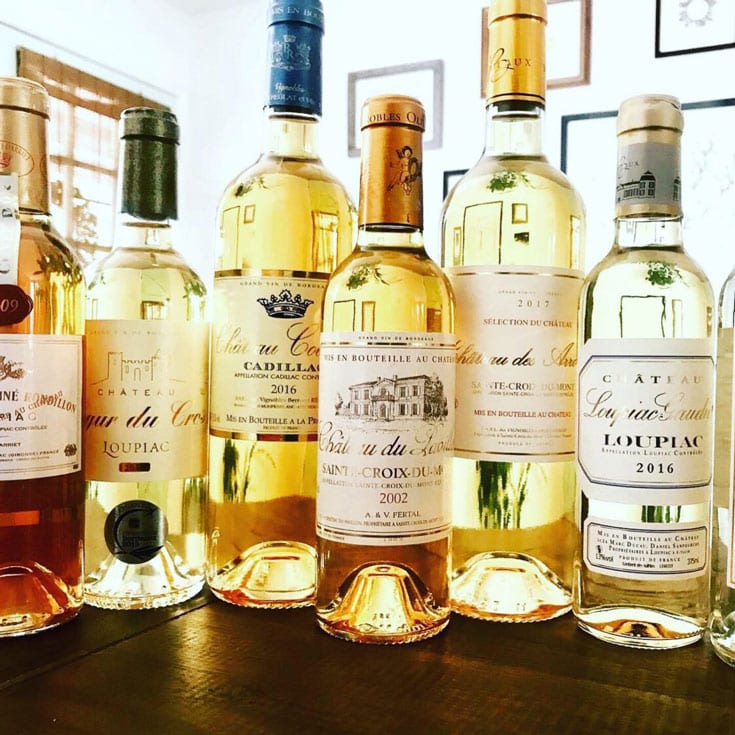
White Wine
White wine is made with white (yellow/green/gray) grapes (Chardonnay grape = Chardonnay wine) without the skins. Whites can also be light-bodied (Riesling), medium-bodied (Sauvignon Blanc) or full-bodied (Chardonnay).
Pinot Grigio and Pinot Gris are the same grape!
There are always exceptions to the rule, depending on the preference of each individual winemaker and where the grapes are grown (cool vs. warm climate). Amber (often called orange) wines are also made from white grapes using the skins for color, creating those unique orange hues (nothing to do with actual oranges).
White wine can also be made from red grapes without using the skins. For example, Pinot Noir is one of the primary grapes used in making Champagne.
Serving Temperature for White Wine and Rosé
Serve almost all white and rosé wine 38° F (refrigerator cold). Expensive, quality bottles like Champagne should be served cold, but not too cold ~47-50° F. For those bottles, just take them out of the refrigerator about 30 minutes prior to opening.
Sparkling Wine
Sparkling wines are made with both red and white grapes. Champagne is primarily made with three grapes: Chardonnay (white), Pinot Meunier (red/black) and Pinot Noir (red/black) and is only made in Champagne, France. If it’s made in any other part of the world, it is labeled “sparkling” wine. Cava is Spain’s “Champagne” and in Italy, it’s called Prosecco. Bubbly wines can be made sweet or dry (opposite of sweet).
Spakling wine from dryest to sweetest: Brut Nature, Extra Brut, Brut, Extra Dry, Dry, Demi-Sec, Doux.
Sweet Wines
Sweet wines like Moscato, Gewürztraminer and White Zinfandel can be made from red or white grapes and are higher in residual sugar. Fun, sugary sweet and often budget-friendly, these styles help a lot of people get their start in the world of wine. Gluggable and usually lower in alcohol, they’re easy to drink and served refrigerator cold.
Dessert Wine
Dessert wines like Sauternes are made with noble rot grapes. Botrytis Cinerea (noble rot) is a good type of fungus that turns grapes like Sémillon into super sweet, honey-like wines (often with hefty price tags). Popular dessert wines are Tokaji, Riesling, Sauternes and Golden Bordeaux. Dessert wines pair great with sweet or savory foods and are served very cold.
Fun Fact: The record for the most expensive white wine sold was a bottle of 1811 Château d’Yquem in 2011 for $117,000 (Sauternes dessert wine)!
Fortified Wine
Fortified wines like Port (sweet, red wine from Portugal) are different in that they have added spirits like Brandy, making them very high in alcohol and more age-worthy. Most Port is served cool, but not cold (~65° F).
Open Wine Goes Bad Fast
For those who do not finish the entire bottle (who does this?), cork it tightly as possible and place in the refrigerator. Enjoy the remainder within a day or two.
Helpful Gadgets: Preservation tools like the Vacu Vin Wine Saver (affiliate) or Coravin (affiliate) are a great way to keep your wines fresher longer.
Left on a kitchen counter, wine will begin to go bad after just a day or two, quickly becoming oxidized. Wine goes bad from too much exposure to oxygen just like apples and avocados (think about how fast they brown). Once opened, your bottle of red will only stay good for a few days. Leave that bottle of red on your counter for a week and it’ll start to smell and taste like vinegar (time to discard that bad wine).
White wine (same with rosé and amber) can last up to one week if kept in the refrigerator, but you may notice a decline in taste within a couple of days.
Tip: Keep leftover wine for cooking! Use an opened bottle for up to 2 weeks (keep it refrigerated!).
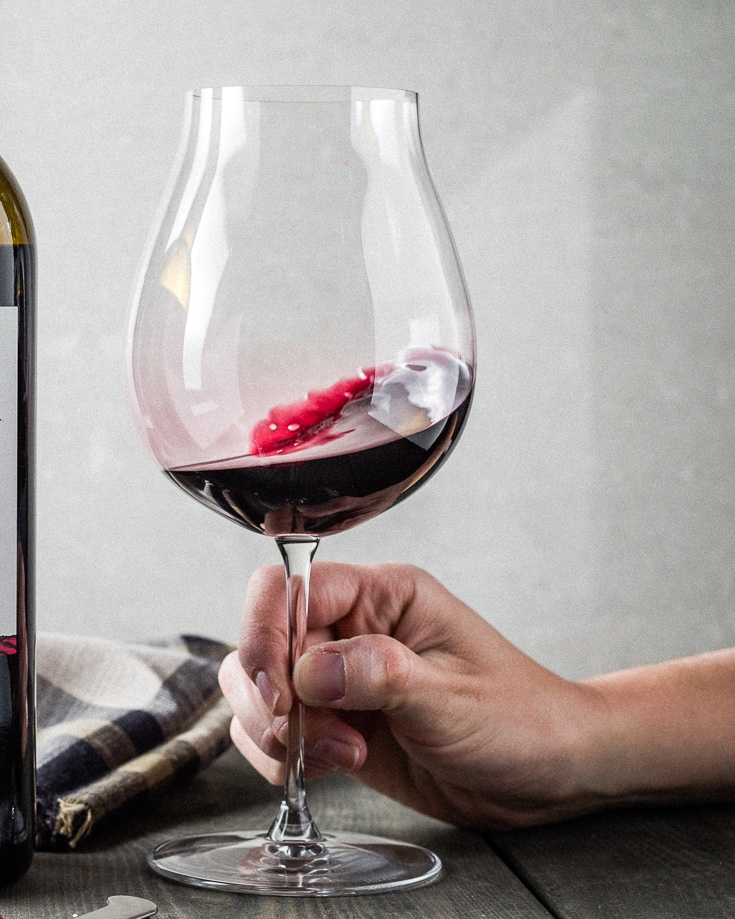
Look, Swirl, Smell and Taste
Color and clarity are the first things we look for when tasting wine. Fined and filtered wines will be nice and clear in the glass. Unfiltered styles may have little particles floating, appear hazy or have extra sediment at the bottom of the bottle (most natural wines are unfined and unfiltered).
There are no wrong answers!
Smelling lets us use our olfactory senses. Get your nose in a glass of Cabernet, and one person may declare “this smells like black currant.” Unless you grew up or spent summers in Northern Europe, you might’ve never even tried a black currant, so you simply won’t describe it the same way.
You’ll rely on your memory for the tastes and aromas you’ve experienced. Maybe you’ll think it smells like a mix of dark fruit with some herb you can’t quite place, while the guy next to you says it smells exactly like cedar with just a soupçon of mint. There are no wrong answers!
Fun Fact: Black currants were banned from New York and most of the United States for half a century because they were thought to have a fungus that could’ve been devastating to the timber industry. So, no wonder the majority of Americans have never smelled or tasted black currants!
The same goes for what we taste. Certain aromas and flavors are generally associated with each varietal (type of grape), but every bottle and vintage will be different and so will our descriptions.
Some wines smell like you’ve walked into a barn full of horses and sweaty saddles. Brettanomyces, or “Brett” for short, is a wild yeast responsible for those funky aromas. They won’t hurt you, and people either love or hate them (most often found in reds like Cabernet Sauvignon and Carignan).
The body of a wine is how light or heavy it feels in the mouth, and much of it depends on the alcohol level. Higher alcohol styles will have “legs” when swirled in the glass, due to being more viscous. Legs (also referred to as tears) are not indicative of quality, they are just a characteristic of fuller-bodied, higher ABV wines.
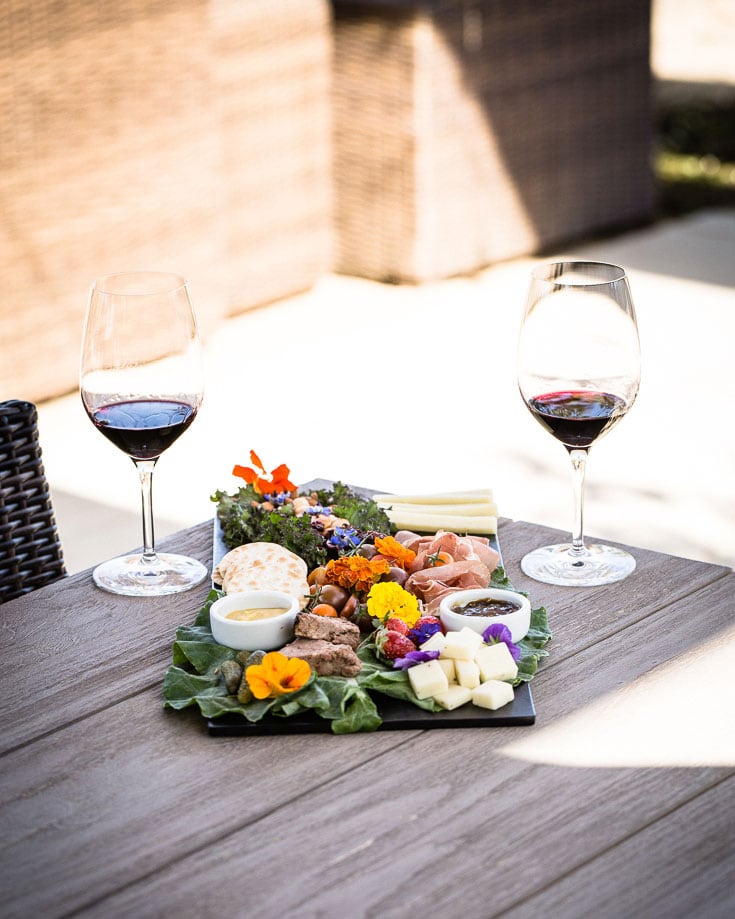
5 Main Characteristics of Wine
Identifying the five major characteristics of wine (Sweet, Acid, Tannin, Alcohol, & Body) gives a solid foundation for understanding and being able to describe what you’re experiencing (likes/dislikes) with each sip.
1. Sweet
Detecting sweetness in wine is the easy one. It’ll taste sweet! Each bottle of wine will have different amounts of residual sugar ranging from 0%-20%. If you’re at your local wine shop and in the mood for something sweet but not too sweet, the quickest way to find out is to ask.
Very few labels will give you a sweetness scale. You can also search for the wine’s “tech sheet” online, which gives detailed information about that specific wine and vintage (it’s like reading the wine’s biography).
Examples of sweet wines: Moscato, Riesling, Tokaji, Sauternes, Asti Spumante and Ice Wine.
2. Acid
Acidity in wine is what makes our mouths water. Tart, citrus (grapefruit, lemon, lime), bright, crunchy and sharp are all common descriptors for acid. All wines contain acid, with a typical pH level between 3 and 4.
The pH scale ranges from 0-14, with 0 being most acidic and 14 most basic. Vinegar is 2.5, wine 3-4, milk is 6.5 and 7 is neutral.
Generally, wines from cooler climates will have more acidity. Warmer climates result in riper, sweeter grapes with lower acidity. For example, if you take a sip of New Zealand Sauvignon Blanc and it makes your mouth pucker like a tart lemonade, that’s the acid (a good thing with this grape and region).
Examples of wines with higher acidity: Spanish Albariño, German Riesling and New Zealand Sauvignon Blanc.
Red wines with more of a heavy, syrup-like texture and mouthfeel could be out of balance with not enough acidity. Acid makes wine lively and bright. There are beautiful and not so great examples of each style of wine.
Try pairing Albariño with Grilled Fish Tacos!
3. Tannin
Tannins (primarily detected in red wine) are naturally present polyphenols in the stems, seeds and skins of wine grapes. If you’ve taken a sip of red wine and had an astringent, drying sensation on your tongue, that’s the tannin. Strong, unsweetened black tea has the same effect. Common descriptors are grippy, elegant, bitter, silky and velvety.
Examples of wines with high tannins: Cabernet Sauvignon, Tempranillo and Nebbiolo.
4. Alcohol
Alcohol levels vary in wine, ranging from 5%-20%. Legally, every bottle of wine must display the alcohol by volume on the label (ex: 13.5% ABV). Alcohol doesn’t just make you a better philosopher, it plays a big role in the flavor, structure and harmony between acid, sugar and tannins. Wine’s body depends a lot on its alcohol content, as it’s more viscous than water.
ABV is a globally recognized standard of measurement for alcohol content. Red wines from warmer climates are generally higher in ABV (ex: Shiraz from Australia, Garnacha from Spain). Fortified wines, such as Port, are over 16% ABV.
Reds with higher ABV will typically be fuller in body and texture, and cling to the glass when swirled. Whites with lower ABV will have a much lighter body and feel thinner.
5. Body
Body is how thick or thin the wine feels in your mouth. A standard example is comparing wine to milk. Full-bodied wines have similar weight to whole milk (or creamer), medium-bodied wines are like 2% and light-bodied wines are thinner like skim or 1%. Common descriptors of describing the body’s texture are full, medium, light, delicate, juicy, oily, jammy, creamy and big.
Example of wines that are fuller-bodied: Petite Sirah, Chardonnay and Zinfandel.
Next time you try a glass of wine, try picking out sweetness, alcohol level, tannins and body. Unless you’re in the wine business, there’s no need for specific, detailed assessments. Just being able to identify the main characteristics gives you a better understanding of a wine’s complexity and helps you associate and apply the qualities you prefer when choosing a bottle (especially helpful with food pairings!).
Zinfandel can often be described as “jammy.” Some say it’s not a compliment, as the wine may be “flabby” without enough acidity. Others love jammy wines. Drink what you like!
Fruity or Sweet
When you choose a bottle from any red wine section, almost all (Cabernet, Merlot, Zinfandel, Pinot Noir, Sangiovese, Malbec, etc.) will be dry. However, some reds have more fruit-forward flavors (ripe fruits, plum, cherry, etc.) as opposed to dried herbs and savory notes.
For example, tasting a Petite Syrah next to a Pinot Noir, you may perceive one being thicker (fuller bodied) and “sweeter” than the other, even though both are low in residual sugar and considered dry. Fruity flavors can often give the perception of sweetness. It’s all a matter of personal preference and what style will go best with your meal (or by itself, or with your favorite cheese).
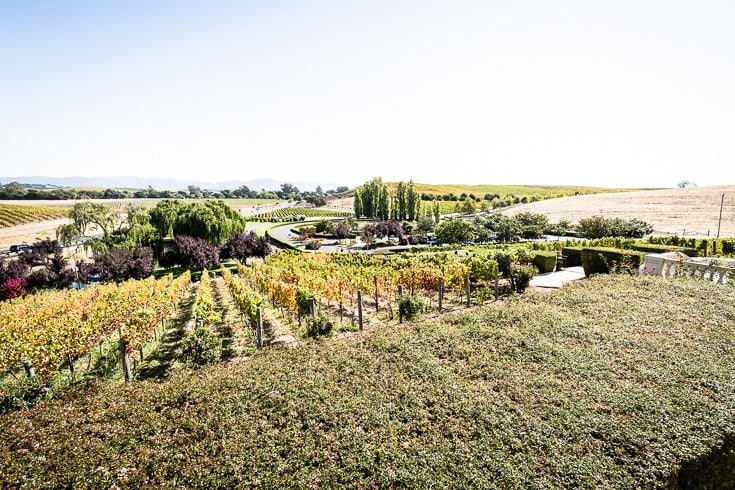
Vintage
Vintage refers to the year the grapes were harvested (the date listed on the bottle). The phrase “excellent year” refers to a growing season when conditions were ideal, with the weather nearly perfect for optimal growing and ripening of grapes, thus providing the best fruit for creating exceptional wine.
“Age is just a number. It’s totally irrelevant unless, of course, you happen to be a bottle of wine.”
— Joan Collins
Nearly 99% of wines produced are meant to be opened within 2-5 years. Specialty wine shops and boutique wine stores are the best place to find unique, age-worthy bottles (most don’t age well).
If you don’t see the year listed on the bottle, it is a “non-vintage.” Grapes can be from a recent harvest, several years old or a mixed blend.
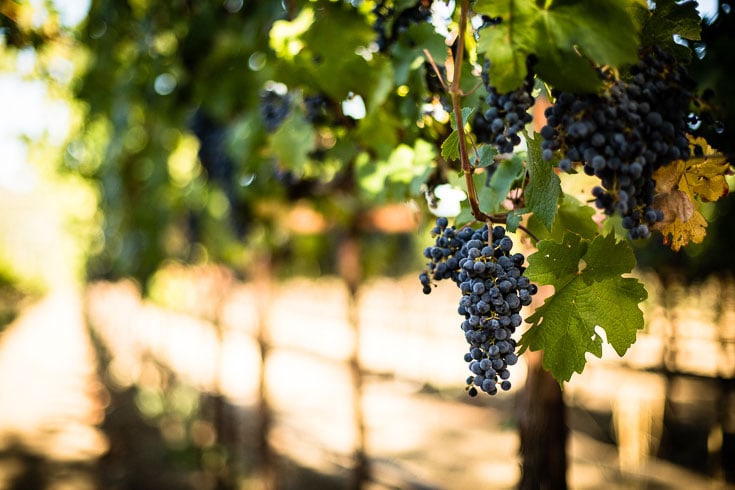
Natural vs. Conventional Wine
Evidence of winemaking dates back over 8,000 years. Natural wines are created much the same way they were back then, with minimal intervention. They’re made organically (no herbicides or pesticides) and sustainable, without the use (or very minimal use) of additives, fining, filtering agents or sulfites. Due to the demand for cleaner wine and environmental consciousness, natural wines have gained a cult following.
Fact: Most wines are not vegan. Fining and filtering agents can contain animal sources like egg whites (albumin) and fish bladders (isinglass).
Conventional wines are the majority. Grapes are often grown using chemical agents (pesticides, herbicides, etc.) in the vineyards. Legally, winemakers can use up to 200 different additives like Mega Purple or Polyvinylpolpyrolidone (PVPP) to create better looking and tasting wines.
This may sound horrible, but additives and agents used to help clarify wine or balance acid are all safe. Almost all wineries use them, some more than others. Worst offenders are the mass-produced, bulk, ultra-cheap wines.
Sulfites in Wine
Sulfites (Sulfur dioxide) occur naturally as a byproduct of fermentation, so even wines labeled “sulfite-free” will still contain minimal amounts. Present in both conventional and natural wines, sulfites acts as a preservative, the same as in canned soups, dried fruit and other processed foods like lunch meats.
Natural winemakers and those that are certified organic may choose to not add any extra (label will say “no added sulfites”) or only a minimal amount to keep wine fresh and safe. Winemakers can legally add up to 350 parts per million, but that’s still 5x less than dried fruit!
Dry white wine can contain up to 50% more sulfites than dry red wine. Sweet wines contain more sulfites than dry styles.
About 1% of the population, mainly those with asthma, are sensitive to sulfites in wine — as well as potato chips, soda, processed juices, etc. But, don’t blame sulfites for your red wine headache! It’s more than likely due to the amount of alcohol (too much bulk, cheap wine with maximum additives and preservatives, maybe?!) and dehydration than sulfites.
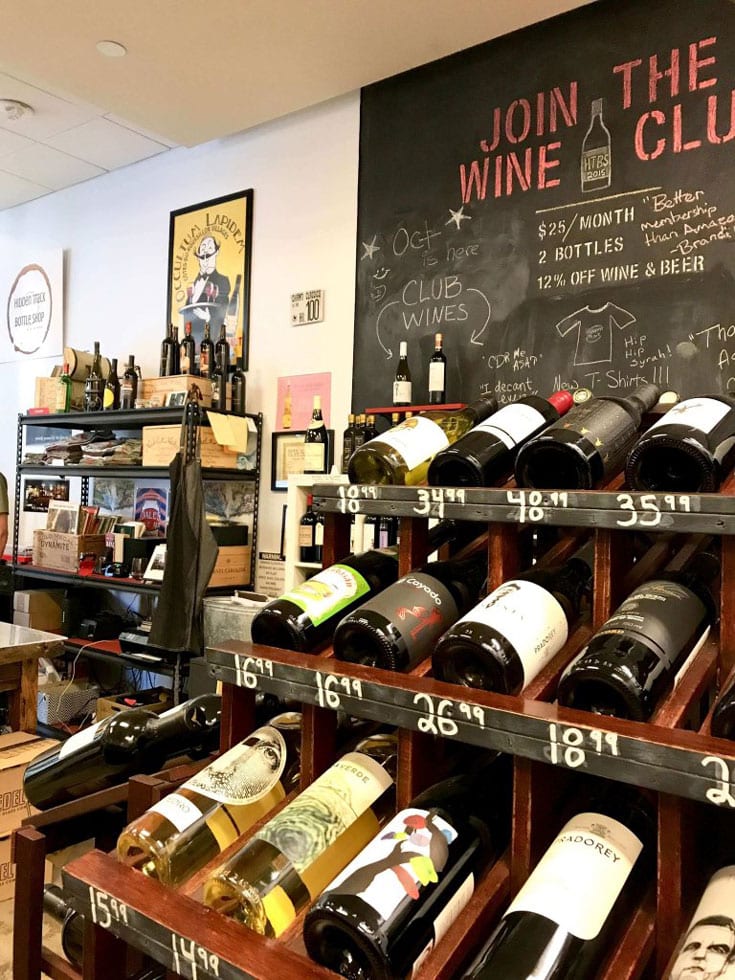
Where to Buy Wine
Local Wine Shops
The best place to buy a bottle of wine (conventional or natural) is your local wine shop. Smaller, independent wine stores are where the passionate wine geeks shop. Many work one on one with smaller, family-owned wineries, importers and distributors.
They’re also the best place to join a local wine club. Wine shops might seem intimidating if you’re new to wine, but they love it when you ask questions or for recommendations. Price ranges vary, so if you’re on a budget, just tell them your price range and they’ll have something better than you’d find anywhere else.
Local Wine Bars
This might sound redundant, but local is the way to go. Wine bars almost always have wine for sale and wine people know good wine. Why not support local even more, and pick up a bottle or two to go? You’ll more than likely find unique bottles and natural wines.
Costco and Total Wine
The next best alternative to wine shops and local wine bars are Total Wine and Costco (Whole Foods is a solid option too). If you’re in a hurry, and the only thing close to you is Target, and you need to pick up cat treats anyway, grab the one with the cute label!
Online
Shopping online is a good option, especially if you know what you’re looking for and like comparing prices. Deals can often be found, but the downside can be shipping fees and being home for deliveries (signing that you’re over 21).
Wine.com is a popular online source as well as the Vivino app. Winery direct (ordering directly from a winery’s website) is a great way for supporting smaller, family-owned, boutique wineries. It never hurts to ask if shipping deals are available.
Wine Clubs
Wine clubs like the California Wine Club are becoming more and more popular, especially for adventurous wine lovers who are open to trying a mix of new styles. Having the convenience of wine delivered on a regular (weekly/monthly/annual) basis, as well as the social aspect of wine releases, pickup parties and wine classes make them worth joining.
Each state will have local wine clubs (best for keeping shipping costs down) as well as local wineries.
Favorite Wine Gadgets and Accessories
- Riedel Swirl Stemless Wine Glasses
- Riedel Cabernet Decanter
- Vacu Vin Wine Saver Pump
- Coravin Model Two Premium — Wine Preservation System
- Zephyr Presrv Dual Zone Wine & Beverage Cooler
Wine for Thought
“Accept what life offers you and try to drink from every cup. All wines should be tasted. Some should only be sipped, but with others, drink the whole bottle.”
— Paulo Coelho
Keep Reading
By Misty Clark
Misty Clark writes about wine and the unique stories behind each label. She is a former R.D.H. (Registered Dental Hygienist) with an applied science degree and has been geeking out about wine for over 20 years. Before obtaining a Wine & Spirit Education Trust certification, she learned about wine just by trying different styles and regions. She is also the author of the Red Wine Cats blog, where she takes a casual approach to learning about wine as well as working with a local distributor in wine sales. “Wine (and food) brings people together, and we’ll never run out of new things to learn!”
Misty’s Blog
Follow Misty on Twitter
Follow Misty on Instagram

